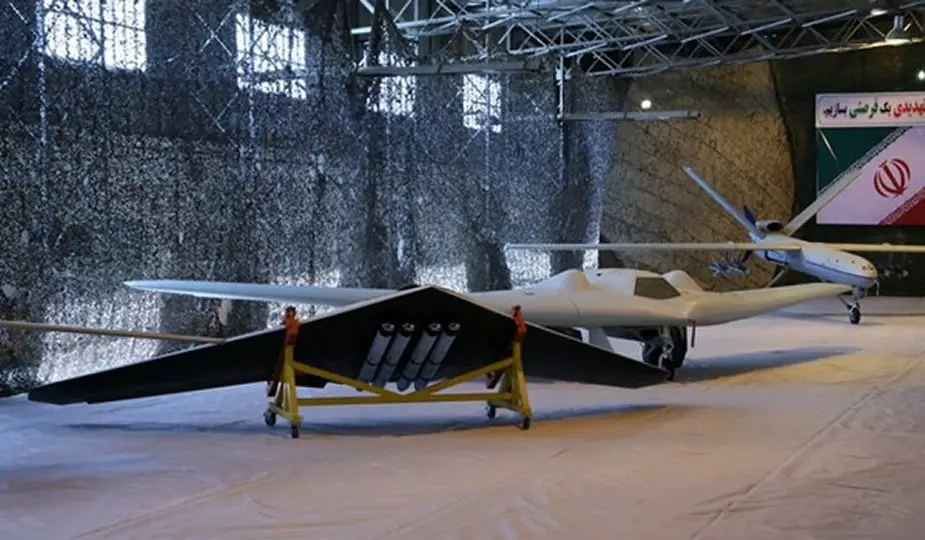Breaking news
Iran uses drones and missiles in cross border attack on enemies in Syria.
On 1st October, the IRGC Aerospace Force used 7 drones as well as 6 ballistic missiles to destroy targets in the Albu Kamal region, in Eastern Syria, FarsNews reports. At least one of the drones was of a Saeqeh model which is an UAV of the Simorgh (Phoenix) class and enjoys the capability to simultaneously strike at four targets with smart bombs that have pinpoint precision-striking capability in far distances. Iran calls “Simorgh” its own version of the US RQ-170 Sentinel.

Saeqeh (Thunderbolt) drone (Picture source: FNA)
Iran has developed Simorgh into a class of drones with reconnaissance, surveillance, combat and bombing capabilities. Simorgh drones are equipped with an autopilot capability that brings them back to their airbase if operators lose control or are disconnected from the pilotless aircraft.
Saeqeh was unveiled in October 2016 and the footages of the drone attack on the terrorists in Eastern Syria on Monday show that it fires bombs from inside a case mounted under the drone's body.
The manufacture of the Iranian drone based on the US RQ-170 drone, which was captured in 2011 by the IRGC Aerospace Force, was a major blow to the US government, according to Pentagon officials. The Iranian version of the RQ-170 drone was manufactured through reverse engineering of the US drone, which was tracked and hunted down in Iran late in 2011, and has been equipped by the IRGC with bombing capability.
Earlier on Monday, the IRGC fired 6 ballistic surface-to-surface missiles and launched drone attacks on enemy positions in Eastern Euphrates region, in Eastern Syria, in revenge for the September 22 Takfiri attacks in Ahwaz city which killed dozens of Iranian people. During the operations codenamed Zarbat-e Moharram (Blow of Moharram) carried out at 2:00 AM (local time) on Monday the headquarters of Takfiri terrorists near Albu Kamal region in Eastern Euphrates was attacked from Kermanshah province in Western Iran, 570km away from the targets.
The missiles were of Zolfaqar and Qiam classes with ranges of respectively 750km and 800km and precision-striking capability. At least one of the missiles bore slogans 'Death to America', 'Death to Israel', 'Death to Al Saud' and a Quranic verse meaning 'fight against the friends of Satan'. They travelled over the Iraqi airspace and hit Eastern Euphrates region in Syria. A few minutes after the missile strikes, 7 IRGC drones targeted again the enemy positions in the region. According to reports, heavy damage has been inflicted on the terrorists' infrastructures and positions. 26 people were killed, and 69 others were wounded in an attack by the al-Ahwaziya group during the nationwide military parades in the Southwestern city of Ahwaz on September 22. The terrorists attacked the bystanders watching the annual Armed Forces' parades, marking the start of the Sacred Defense Week, commemorating Iranians' sacrifices during the 8 years of the Iraqi imposed war on Iran in 1980s, in disguise of the IRGC and Basij (volunteer) forces, killing and wounding several people.




























